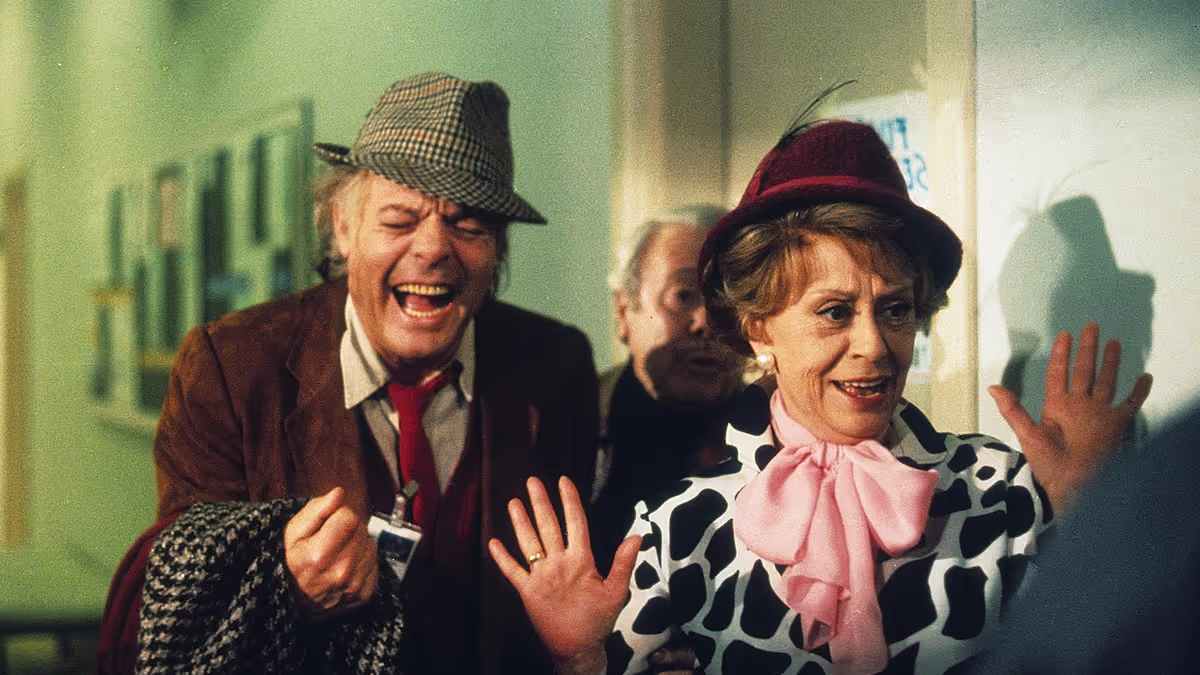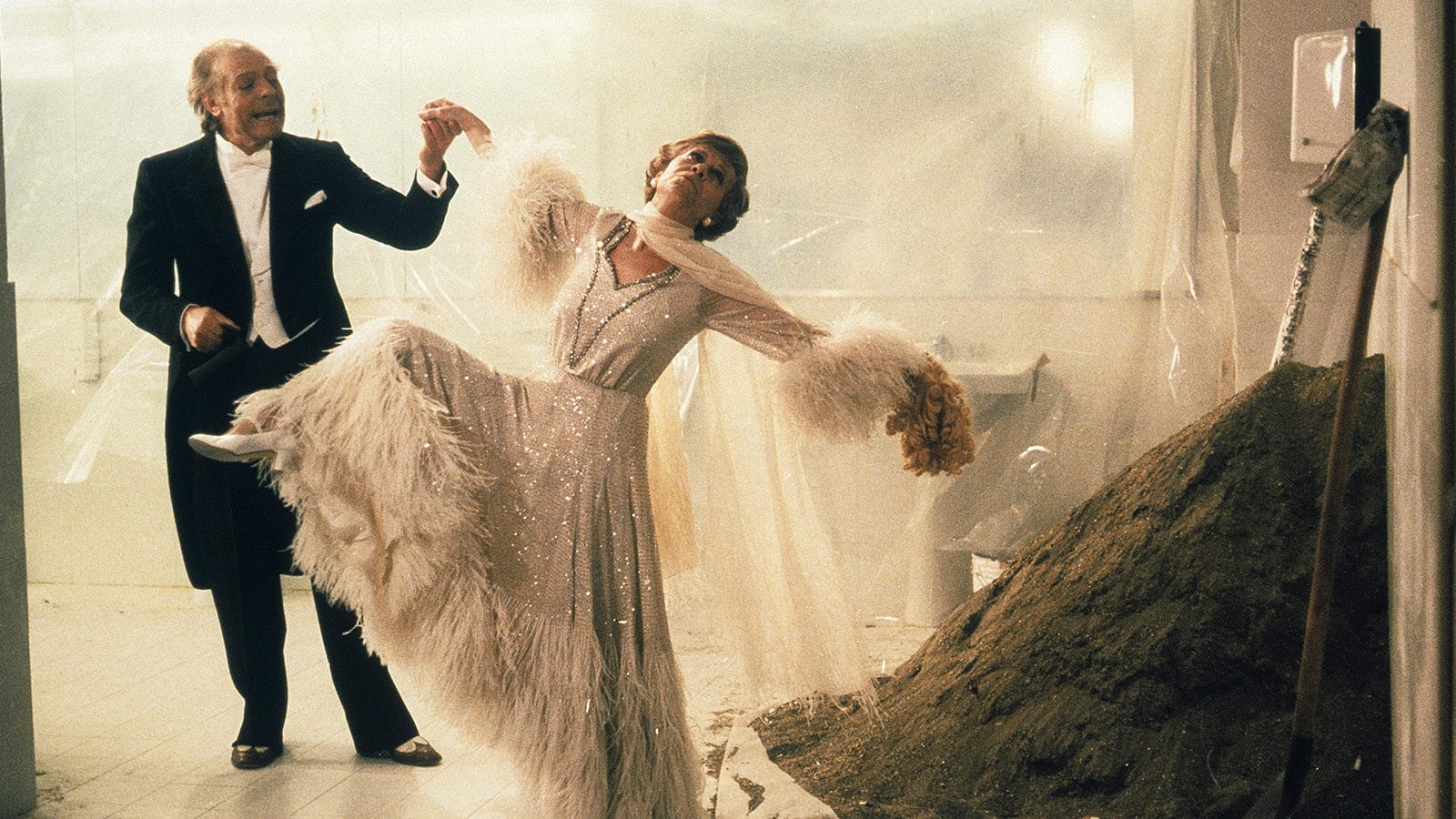Last Dance: With ‘Ginger and Fred,’ Federico Fellini Gathered His Greatest Stars For a Sweet and Sour Reunion
Fellini’s sentimental satire tap dances through the blighted media landscape seen in an earlier form in ‘La Dolce Vita.’

“It’s like the world is looking at me strangely. Like I won’t be around much longer,” Pippo (Marcello Mastroianni) tells Amelia (Giulietta Masina), the dance partner with whom he’s reunited after decades apart, in Federico Fellini’s 1986 feature Ginger and Fred. Pippo has reasons for saying this. Disheveled and alcoholic, he’s clearly seen better days. But those lines tap directly into the spirit of the film and its director, who took the occasion of reuniting with his two biggest stars to craft an alternately sentimental and spiteful tribute to old-time showbiz and Hollywood’s golden age and the crass, sensationalistic world of Italian television in an era dominated by media titan Silvio Berlusconi. It’s a film at odds with itself, tender one moment and acidic the next, which makes it both difficult and fascinating. It’s nobody’s swan song. Mastroianni, Masina, and Fellini would all make more films. But it plays like a bittersweet goodbye anyway, emphasis on the bitter.
It wouldn’t be accurate to call Ginger and Fred a companion piece to La Dolce Vita. For starters, Pippo bears little resemblance to La Dolce Vita’s Marcello. But Ginger and Fred creates a sense that we’re watching what the celebrity-obsessed culture seen in its nascent form in Fellini’s 1960 masterpiece has turned into. Pippo and Amelia have reunited to make an appearance on the Christmas episode of We Are Proud to Present, a freewheeling variety show presided over by a slick, unnamed host (played by Franco Fabrizi, one of the stars of Fellini’s 1953 classic I Vitelloni). They’re just one of many attractions scheduled to make an appearance. Others include a monk who’s fallen in love and married a woman, the world’s oldest orchestra, the inventor of edible underwear (who boasts of their “nutritional additives”), an array of celebrity lookalikes ranging from Clark Gable to Marcel Proust to Woody Allen, and a cow with eighteen teats.
The Reveal is a reader-supported newsletter dedicated to bringing you great essays, reviews and conversation about movies. While both free and paid subscriptions are available, please consider a paid subscription to support our long-term sustainability.
What place does a sincere act like Pippo and Amelia’s have in a place like this? Yet as earnest as it may be, the nature of their act further complicates matters. Though they performed a variety of dances, Pippo and Amelia are best remembered, by those who remember them at all, for their impression of Fred Astaire and Ginger Rogers. (Unamused by the homage, Rogers unsuccessfully brought suit against the film.) That makes the line that divides them from, say, the Ronald Reagan impersonator with whom they’re sharing a bill, a little thin. So does the show’s approach to its acts. Pippo and Amelia are given no time to rehearse. They’re just there to be seen before making way for the next act. They might as well be cows with eighteen teats.
Ginger and Fred is a bit of a misfit piece in Fellini’s filmography, making it hard to reduce his career to a steady progress from neo-realism on one end to his deeply stylized later efforts. With other later films, like Ginger and Fred’s immediate predecessor, And the Ship Sails On, Fellini created self-contained studio-bound worlds. Here the world within the TV studio and the hotel putting up We Are Proud to Present’s guests, which, admittedly, dominate the film’s run time, feel artificial and bizarre. But the glimpses we get outside the showbiz bubble, apart from the segments into which grotesque advertising has intruded, look something like what we would call the real world.*
As satire, Ginger and Fred is unsparing, finding nothing redeeming about the world of television. This plays like a stand-in for a more general complaint about the state of the world, as when Amelia looks askance at a tacky rock video playing on a hotel TV. If La Dolce Vita is (at least) half in love with the bright lights and glamor it depicts, however spiritually vacant it might be, there’s none of that to be found here. Maybe the dark omens suggested by the discovery of a sea monster in La Dolce Vita’s final moments have come true, just in the most vulgar possible ways.

Ginger and Fred is not the sort of a film a younger director would, or could, make. There’s a weariness and disgust to it, a sense that his generation will be leaving a crasser, meaner world than the one they’d hoped for in their youth. But there’s a sweetness here, too. It had been a few years since Mastroianni had worked with Fellini, and Masina had not appeared in one of her husband’s films since Juliet of the Spirits in 1965. They’d also, despite their long associations with the director, never appeared in one of his films together and their accumulated history gives their scenes an added charge. It’s as if Fellini was getting the gang back together to put on one more show while they still can.
That Amelia and Pippo have a difficult relationship only enhances that feeling. They’re fond of one another but Pippo barely recognizes her when they reconnect (he’s a few drinks into the evening) while Amelia sees the Pippo she used to know all too well in the man he’s become. In one of the film’s best scenes, the two awkwardly get dressed on opposite sides of a room while noting how familiar they once were with each other’s bodies. They used to be lovers, but that was a long time ago.
And now? They get one last chance to partner together. The surroundings might be grotesque, their grasp of the steps a little weak, their bodies not quite up to the task, but it’s something. Ultimately, they’re grateful for one more chance to show everyone how it’s done, imperfect execution and all. In that, they seem to reflect the feelings of the man behind the camera.
* Maybe that misfit quality helps explain why it’s become somewhat neglected. The only version I found on streaming services looks good but is only available in a dubbed version.




Discussion